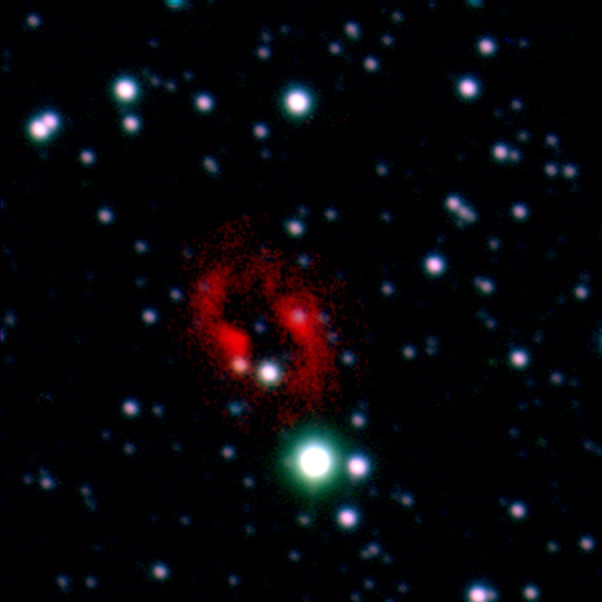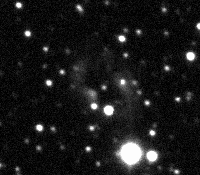Dr Roger Wesson, University College London, says: "At the ends of their lives, some stars undergo nova explosions, caused by nuclear reactions on their surface. In August 2007, one such exploding star was discovered in a part of the sky that had serendipitously been observed by us only a few weeks previously. The pre-explosion images showed that this particular star was surrounded by a planetary nebula.
"Although several novae are discovered each year in our Galaxy, this is only the second time that a nova has been seen inside a planetary nebula, the first being over 100 years ago. Now, the light flash from the explosion is passing through and illuminating the surrounding nebula. This object poses a major challenge to current theories of how stars evolve and could be a Rosetta Stone in understanding some aspects of the lives of stars."

The nebula surrounding Nova V458 Vul, imaged before its central star erupted. Credit: Roger Wesson
"The pre-explosion images were taken as part of the Isaac Newton Telescope Photometric HAlpha Survey (IPHAS), the first digital survey of the Milky Way in visible light, and the most comprehensive yet in the light emitted by hydrogen (the most abundant element in the universe).
"The star which erupted was a nova, an event caused when matter is transferred from one star in a close binary system onto its companion, eventually triggering a runaway thermonuclear explosion. The nebula surrounding this nova is a planetary nebula, which must have formed during an earlier phase in the binary star's existence, when the outer layers of one of the companions were expelled. Only one previous nova has been seen to occur inside a planetary nebula – Nova Persei in 1901. The opportunity to watch in detail as the nova flash interacts with the nebula is a first in astronomy.

Three images showing the changes in the nebula as a result of the nova explosion, in August 2007, May 2008 and September 2008. Credit: Roger Wesson.
"The new nova, known as V458 Vulpeculae, provides an important test for models of how stars evolve. Our analysis also suggests that the combined mass of the two stars which produced the explosion could be high enough that eventually, the two stars will spiral into each other, producing a much larger supernova explosion. The role of novae as potential future supernovae has thus far been difficult to analyse in detail, and so V458 Vul provides an opportunity to learn more about this aspect of stellar evolution."
Article: ‘A Planetary Nebula around Nova V458 Vulpeculae Undergoing Flash Ionization’ by R. Wesson et al, is published in the 20 November 2008 issue of Astrophysical Journal Letters.






Comments